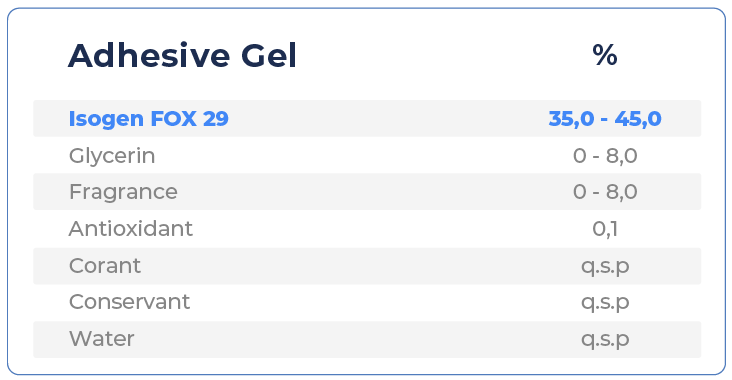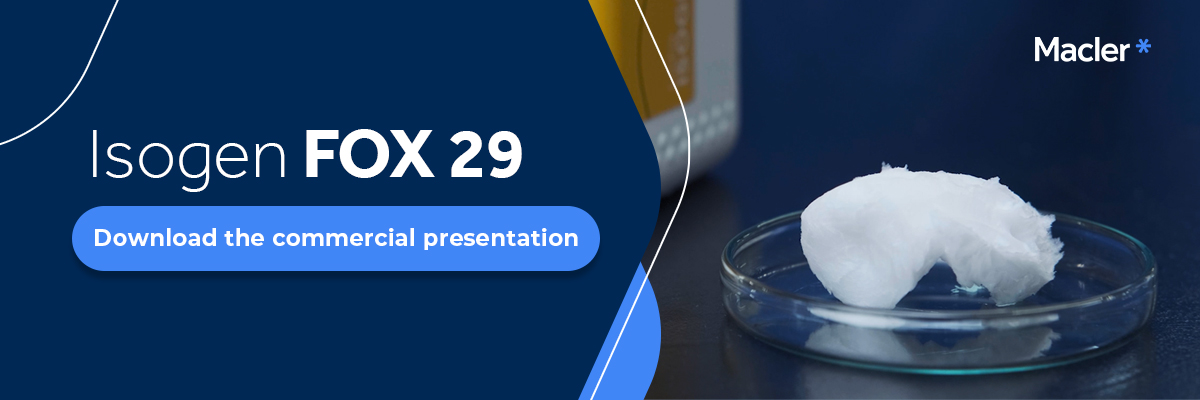Macler gives tips and presents its base for making adhesive gel for toilets
Isogen FOX 29 is a base specifically developed for high strength, high quality adhesive gel formulations for toilets
The use of adhesive gel is a practical way to keep the toilet clean and scented with each flush, avoiding unwanted stains and reducing the proliferation of germs and bacteria.
Despite being a practical solution for the consumer, the process of developing this item is often surrounded by challenges, such as achieving the right consistency, good rinse resistance and ensuring that the product does not soften and run with the action of time and heat.
It was with a view to facilitating the routine of industries that Macler developed Isogen FOX 29.
Ready base for adhesive gel formulation
According to Lucas Micheluzzi, Technical Director of Macler, Isogen FOX 29 is the result of intense and extensive research to develop an adhesive gel that is compatible with the great market leaders and still stands out among them, since its formulation is extremely resistant to rinsing and heat.
"There were hundreds of tests and hypotheses. Once we mastered the formulation technology, we set about developing a base for manufacturing this type of product," says Micheluzzi.
.jpg)
Production process made easy: check out the step-by-step process
Using Macler's base, simply add the fragrance, colorant and water to produce a very high quality adhesive gel. This simplifies the production process, reduces the need for stock control and purchases of different raw materials, and offers a reduction in research and development effort, cost and time.
Check below a formulation option for manufacturing adhesive gel with Isogen FOX 29: 
The process is simple and quick. Check out the steps:
- Add Isogen FOX to the mixing tank and heat to 80°C.
- Slowly add the Glycerin, then the fragrance and the antioxidant.
- Slowly add the dye and stir until homogenized.
- Add water at 80°C slowly and stir until homogenized.
- Fill the product while it is still hot. The product will increase its viscosity quickly after filling.
- Turn off the tank heating only after filling has been completed.
Micheluzzi also shares some tips on the equipment used in this process:
"The stainless steel tank needs to be thermally insulated, all enclosed with only a hole for feeding the inputs in order to avoid excessive evaporation of water. The piping also needs thermal insulation and it must be minimal the tank outlet to the filling nozzle, avoiding heat exchange and clogging by cooling the product."
In addition, the agitation system must be mixed with anchor and propellant, and all equipment components must be made of 90°C temperature resistant material.
For Lucas, this solution is an achievement to be proud of, as it provides Macler's customers with great competitive advantages.
Learn More
Few products in the home care segment have undergone as many transformations as fabric softeners. The technical and technological evolution in recent years has included everything innovative formulation structures to gain viscosity.
With this article, we aim to offer a clearer and more efficient starting point for formulators who wish to develop cleaning products with high performance, safety, and cost-effectiveness.
Our chemistry
We use our labs to create
intelligent chemical solutions balanced with your reality.
Products
We use our R&D center, our own laboratory with experienced professionals, to deliver intelligent chemical solutions in balance with your reality.
.PNG)
